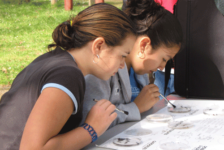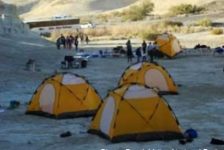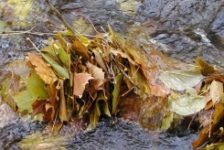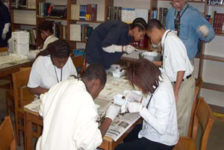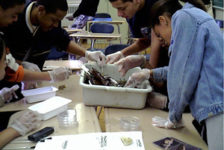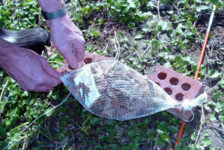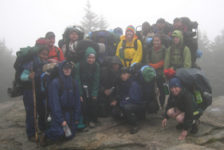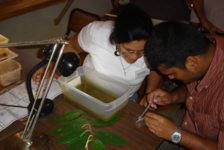In this issue: Science Fair Winner; First Oregon Leaf Packers Study Threatened Stream; First Maryland Leaf Packers: Community Collaborative Comparing Urban and Rural Streams.
“I want to make it clear, if there is ever a conflict (between environmental quality and economic growth), I will go for beauty, clean air, water, and landscape.” — Jimmy Carter.
First Place Again!
Patrick Green, sophomore at Chamande High School in Mineola, New York, won first place at Chamande Science Fair this year.
Patrick used the Leaf Pack Experiment to study a local stream. This is the second consecutive year that he has won first place! Congratulations, Patrick!
Thanks to Ailene Rogers from Cornell Cooperative Extension for sharing this news with us.
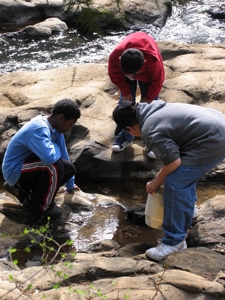
First Oregon Leaf Packers Study Threatened Stream
Contributed by Marianne Butler, Environmental Education Intern, Baltimore Ecosystem Study
Jordan Meyers, a 6th grader at Tom McCall Upper Elementary School, Forest Grove, Oregon, wrote the following article, with assistance from his teacher, Charlie Graham. Scoggins Creek, is in the Lower Columbia River watershed basin.
One of the highlights of our year was placing leaf packs in Scoggins Creek last January.
Three leaf packs contained Western Red Cedar, Red Alder, and Big Leaf Maple. The fourth only contained Western Red Cedar because we wanted an experimental due to the massive number of Western Red Cedar leaves in the water.
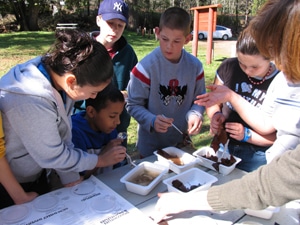
Our class’s interest in water quality grew out of our experience raising Spring Chinook Salmon and Rainbow Trout. In fact, we released our trout “fry” the same day we placed our leaf packs in Scoggins Creek.
When we collected our data one month later, we discovered many things about our stream’s health by observing the macroinvertebrates in our leaf packs. Pacific University Professor Mark Bailey enhanced our exploration by providing lap top computers with microscopes, digital video and still cameras to record the event.
We concluded that Scoggins Creek is a reasonably healthy stream. Scoggins Creek has been in the news because of a proposal to raise the nearby reservoir dam, which would flood out the creek. A reporter from KATU TV in Portland did a story on us, and we have been pleasantly surprised by the support and interest we have received.
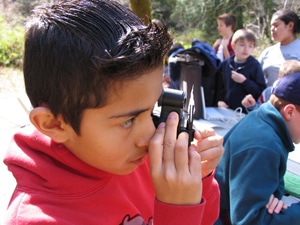
Our class is now working on a movie about our leaf pack, salmon and trout projects. Thinking in terms of ‘telling our story’ has given a new perspective as we have used our reading, writing, and research skills, as well as movie design and video editing, to share our experiences with others.
Coming this fall … the first Idaho Leaf Packers, in the Upper Columbia River watershed, tell their story.
Assistance Available to Leaf Packers
Are there times you really aren’t sure about identifying specific macroinvertebrates? Did you know you can email a picture to us and we’ll help you identify it? Please, do not be frustrated with “I’m not sure” or guessing, just ask!
First Maryland Leaf Packers: Community Collaborative Comparing Urban and Rural Streams
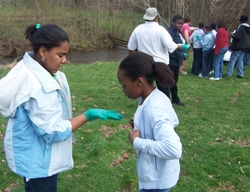
This spring, elementary and middle school students from West Baltimore added some new words to their vocabulary: decomposition, macroinvertebrates and urban-rural gradient.
Where in the world did they learn this language? Through their participation in SuperKidsGrow, an after school program run by the Parks and People Foundation, a non-profit organization committed to providing educational and recreational opportunities to urban youth and enhancing their communities through greening initiatives.
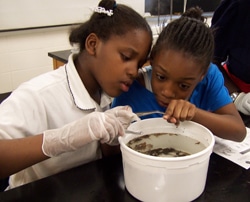
The students were excited about doing the same Stroud Water Research Center Leaf Pack investigation that Nobel Laureate Wangari Maathai’s Green Belt Movement had done with students in Kenya.
Scientists from the Baltimore Ecosystem Study (BES), a long- term ecological research study of Baltimore, helped the kids select three streams along an urban- rural gradient where they gathered and placed leaf packs.
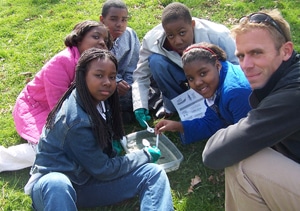
Back in the classroom the students discussed their observations and reviewed aerial photographs of the sites. Based on their observations and their studies of pervious and impervious surfaces, they hypothesized that the rural stream would yield the most macro-invertebrates (This hypothesis was later validated by their study results).
After a month the leaf packs were retrieved and processed with the help of Dr. Chris Swan and his research assistants at the University of Maryland Baltimore County (UMBC), where the students got to use UMBC’s high-powered microscopes. The students then prepared a report of the investigation.
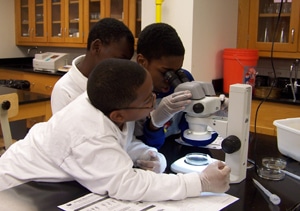
The Leaf Pack Investigation is a perfect fit for the SuperKidsGrow ecology curriculum that BES is developing. This initiative, which brought hands-on inquiry-based science to urban students and enabled them to visit with ecologists at a top-notch university, is part of a larger effort to increase minority representation in the field of ecology.
Summer 2005: Where Are We Up To?
June: Lexington, VA: Boxerwood Gardens, hosted by Mary Baldwin College; Mahopac, NY: Water Quality Conference, Mahopac High School, Hosted by Bob Connick
July: Hollidaysburg, PA: Canoe Creek State Park; Slippery Rock, PA: Jennings Environmental Education Center
August: Arkville, NY: Catskill Center



